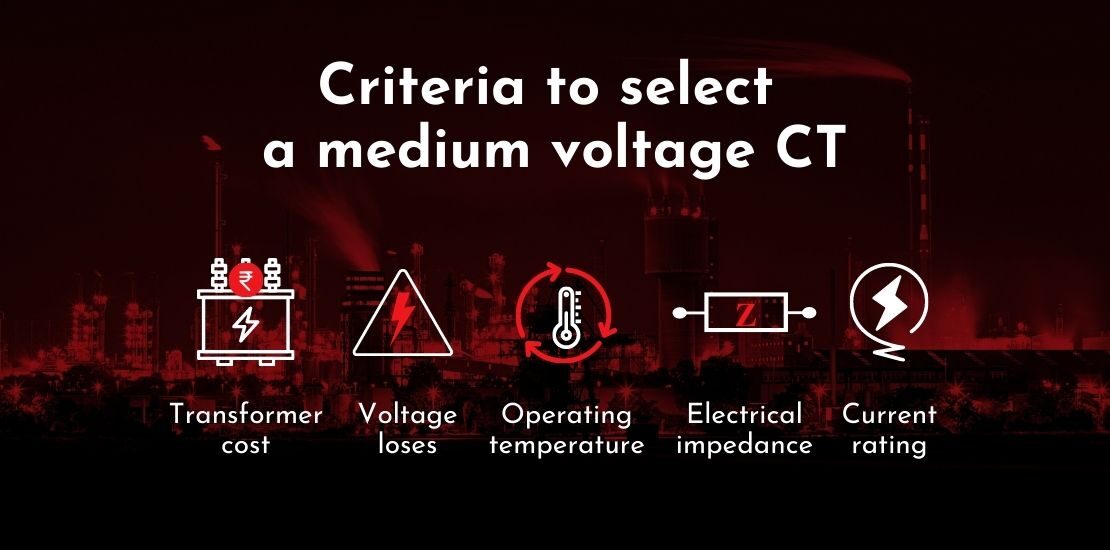- June 28, 2022
- Posted by: Dyaneshwar Nirmale
- Category: Digital Meters

Medium voltage current transformers play a critical role in power distribution. They are the key to the efficient and safe functioning of several applications such as medium voltage switchgear. Current transformers are used alongside power measuring devices to enable stepping down of primary current for measurement with ammeters. Stepping down of the high-voltage current from grid lines by the CTs also makes it possible for the loads such as appliances and machines to use the power. Given the critical nature of their work, the selection of the medium voltage current transformers entails a number of considerations.
Consider these 5 criteria to select a medium voltage current transformer
Medium voltage current transformer costs
The cost considerations in a medium voltage current transformer include the buying costs, installation costs, as well as the cost incurred due to total losses amortized over the estimated life span of the CT.
Newtek Electricals offers resin cast medium voltage current transformers. These transformers are designed to withstand the harshest of environments, while keeping lower operational and maintenance costs.
Medium voltage current transformer losses
The maximum efficiency of the current transformer is decided based on the relative value of these losses. An ideal transformer should have an efficiency between 98%-99.5 %. A highly efficient transformer requires less cooling and hence saves energy.
In recent years, medium voltage current transformers with amorphous core are being used increasingly for small distribution units. These transformers witness considerably lower core losses than certain conventional transformers.
Explore various measures to reduce losses in current transformers.
Medium voltage current transformer operating temperature
The load connected to the current transformer determines the amount of losses the CT will witness. These losses in turn impact the operational temperature. The operational temperature influences the lifespan of the CT insulation. If the temperature of the insulation rises above that of its rated temperature, it will decrease the lifespan of the insulation, and consequently that of the transformer.
A 10-degree increase in the operational temperature could reduce the life of the CT by around 50%. A key to keeping this issue under control is to use transformers that re compliant with the relevant standards.
Medium voltage current transformer impedance
Transformer impedance has a significant impact on the prospective fault currents in a power system. Thus, impedance data is a key requirement to determine the desired protection requirements. In instances where accuracy is not the paramount requirement, fault current calculations can be made using general impedance data.
Medium voltage current transformer short-time current rating
Short-time current rating is the measure of the maximum fault current that a CT can withstand for a short time. This value is determined by a number of other factors such as the peak asymmetric value of fault current, rms value of the fault current over a short period, the duration of short current, and its peak asymmetric value, and the measure of transient voltage at the point when the fault occurred as well as the point of extension of arc by the circuit breaker.
Explore other general considerations in the current transformer selection
